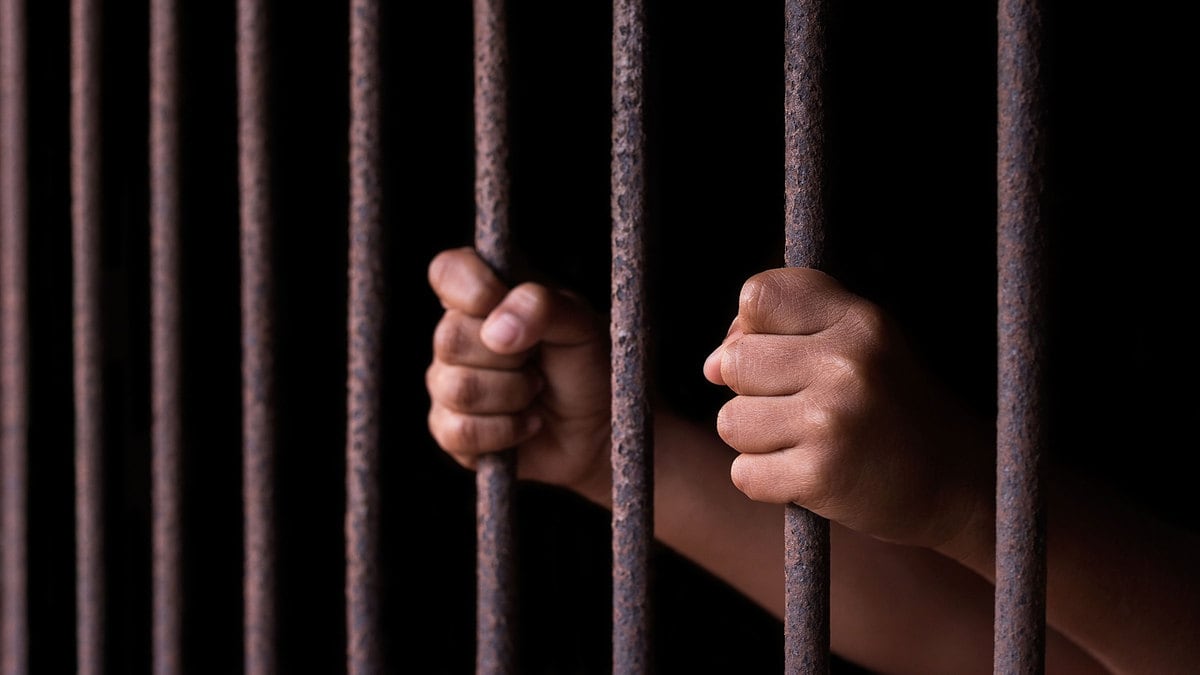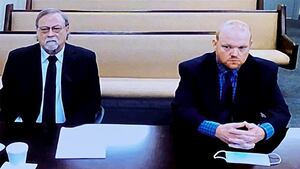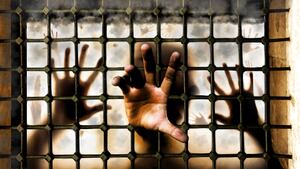Eddie Lee Howard was twice sentenced to die based almost solely on bite mark evidence, and a forensic dentist’s testimony that there was “no doubt” Howard’s teeth matched bruises found on a murder victim’s body. After 26 years on Mississippi’s death row, Howard was exonerated in January, making him at least the 28th person in America to be freed after bite mark evidence was discredited by DNA.
In 2012, nearly 30 years after an FBI investigator testified that hairs found at a murder scene belonged to Santae A. Tribble—and that there was “one chance in 10 million” those strands could have come from someone else— Tribble’s conviction was overturned and DNA evidence revealed one of the hairs was actually from a dog. Anthony Ray Hinton was convicted of two murders based on an erroneous bullet match made through a forensic firearms analysis. By the time Hinton was freed from an Alabama prison in 2015, he had spent three decades on death row.
The Innocence Project finds “the misapplication of forensic science contributed to 52 percent of wrongful convictions” in the cases it has successfully tackled, while the National Registry of Exonerations has identified “false or misleading forensic evidence” as a “contributing factor in 24 percent of all wrongful convictions nationally.”
Techniques for “pattern matching”—which claim to match physical evidence from a crime scene to a single person, and include analysis of bite marks, finger prints, blood splatter, fibers, bullet lead and handwriting — were once considered unassailable. They’re now known to be disturbingly fallible. But the biological evidence needed to undo the damage caused by decades of reliance on that evidence is often unavailable.
“Often, the only way to overturn a conviction that rests on forensic science is through DNA evidence, and that’s almost always a long shot to find and test for it to be sufficiently exculpatory,” Chris Fabricant, director of Strategic Litigation at the Innocence Project and one of the lawyers who helped free Eddie Lee Howard, told me. “Biological evidence is available in a tiny percentage of cases—we have 2.2 million people in the United States under some form of incarceration and the cases in which DNA is available is just an infinitesimal, tiny percentage.”
“I always want to emphasize that when we’re talking about the problems of forensics, we only know what the scientific problems are. We don’t know how many miscarriages of justice are attributable to this, but we do know that the numbers we look at are a tiny subset of a much, much larger problem. The consequences are so much more significant than you and I, or anybody really can understand.”
One thing that is clear is that the impact of bad science hits Black folks who enter the criminalizing system—where they are more likely to be falsely accused, indicted and sentenced—especially hard. A report from the National Registry of Exonerations found Black people, who make up 13 percent of the U.S. population, represent 47 percent of exonerations. The study also found that “innocent Black people are about seven times more likely to be convicted of murder than innocent white people,” and that “Black people who are convicted of murder are about 50 percent more likely to be innocent than non-black people convicted of murder.”
The Innocence Project is currently working to free and exonerate Danny Lee Hill, Jimmy Rodgers, and Jimmie Chris Duncan, who are sitting on death row in prisons around the country. Their convictions all relied heavily on bite mark analysis, which a 2016 Obama-era study by the President’s Council of Advisors on Science and Technology found “does not meet the scientific standards for foundational validity” and which the panel ruled is so “far from meeting such standards” that the report opposed “devoting significant resources to such efforts.”
That followed a 2009 landmark investigation by the National Academy of Sciences that concluded forensic science, “both research and practice, has serious problems,” and which noted that aside from DNA analysis, “no forensic method has been rigorously shown to have the capacity to consistently, and with a high degree of certainty, demonstrate a connection between evidence and a specific individual or source.” More specifically, the report pointed to microscopic hair analysis as an inadequate method to “reliably match” hair strands to a single person, and determined bullet print matches, among other forms of forensic evidence, are often “introduced in criminal trials without any meaningful scientific validation, determination of error rates, or reliability testing.”
John J. Lentini, widely recognized as perhaps the most reliable authority on scientific protocols for fire investigations, has been highly critical of arson investigation methods, once stating that “most of the ‘science’ of fire and explosive analysis has been conducted by insurance companies looking to find evidence of arson so they don’t have to pay off their policies.” Other recent investigations have shown that finger-print matching error rates may be wrong in as many as 1 out of every 18 cases, that our teeth are also less unique than once believed, and that human skin is particularly poor at preserving tooth mark indentations.
Following the debunking of hair sample evidence in the Tribble case and two other wrongful convictions, the FBI launched a review of nearly 3,000 cases in which investigators conducted hair sample analyses that helped secure convictions. The study determined that in an astounding 96 percent of the first 268 cases reviewed, FBI microscopic hair analysts “provided either testimony with erroneous statements or submitted laboratory reports with erroneous statements.” At least 35 defendants in those cases had been handed death penalty sentences, and “nine of these defendants have already been executed and five died of other causes while on death row.”
The FBI had already stopped using Comparative Bullet Lead Analysis, which supposedly used “analytical chemistry to determine the amounts of trace elements (such as copper, arsenic, antimony, tin, etc.) found within bullets,” so that “the result of that analysis allows crime-scene bullets to be compared to bullets associated with a suspect,” after another study by the National Academy of Sciences sounded the alarm over “the interpretation of the results of bullet lead examinations.” But not before the FBI’s open laboratory had used the discredited method in “2,500 cases submitted by federal, state, local, and foreign law enforcement agencies” dating back to the early 1980s.
Yet most courts still allow for evidence to be introduced from these questionable fields, with no court at the local or federal level banning forensic evidence, such as bite marks, that have often proven to be faulty. Fabricant pointed to what he sees as a symbiotic relationship between prosecutors, the “expert” forensics scientists who match “the suspect they are seeking to convict of the crime and the evidence they’re trying to use to convict that person,” and a legal system that is always slow to change and “reluctant to take any tools away from prosecutors.”
What’s more, police sometimes perform scientific analyses despite lacking the credentials or qualifications to do so, while crime labs are often “embedded in police departments, with the head of the lab reporting to the head of the police department.” In some localities, “prosecutors write lab workers’ performance reviews.”
“Everybody that works in the justice system understands that once a defendant is indicted, they’re very likely to be convicted, and all the more so when allegedly scientific evidence points to guilt, because jurors cling to that evidence. They want to get it right,” Fabricant told me. “The prosecution version of the ‘CSI Effect’ is that because of shows like CSI, jurors anticipate scientific evidence they can use to come to a verdict and if they lack scientific evidence, there may get unjust acquittals. The defense version is that CSI depicts these techniques as infallible, and therefore juries place great faith in these methods, and don’t think critically about the evidence being introduced at trial. And that allows ‘experts’ to get away with breathtaking claims in terms of the precision of these techniques.”
In 2013, the Obama administration established the National Commission on Forensic Science, a federal body whose mission was to improve upon and establish standards for forensic investigations. Four years later, THEN-Attorney General Jeff Sessions shut the panel down. On its way out the door in December 2020, Trump’s Department of Justice made sure to lob one last bomb, issuing a report that sought to discredit the 2016 President’s Council of Advisors on Science and Technology report.
The Biden administration has yet to restore the federal forensics panel or to address the pseudoscience of that so-called investigation. (“Now it’s being cited in criminal litigation around the country,” Fabricant told me. “You ask what’s holding back progress? There you have it.”) Fabricant told me he was disappointed that an administration that prides itself on its pro-science bona fides has done so little to address and correct the issue, but offered one take on what might be the right direction.
“What would be good is if the National Institute of Standards and Technology were the federal agency that houses scientific research for the criminal legal system, so these techniques would be examined, and scientific testing could be done outside of the adversarial system. That way, we could determine if a technique is useful for criminal investigations or not, with no particular criminal investigation at issue, and no pressure for it to come out one way or the other, and we can just go where the science goes.”
He notes that it’s critical the issue be addressed, citing the case of Keith Harward, who in 2016 was finally released from prison for a crime he did not commit after serving 33 years. Not only was Harward’s life tragically rerouted by his wrongful conviction, the real assailant, Jerry Crotty, committed multiple felonies while Harward was locked away. If public safety is the goal of the criminal system, forensics science is one of many hindrances.
“It’s just a less safe and a less just society as a result of the use of unreliable forensic techniques,” Fabricant told me. “Unreliable forensic techniques do not advance a search for the truth. They advance prosecution theories.”








